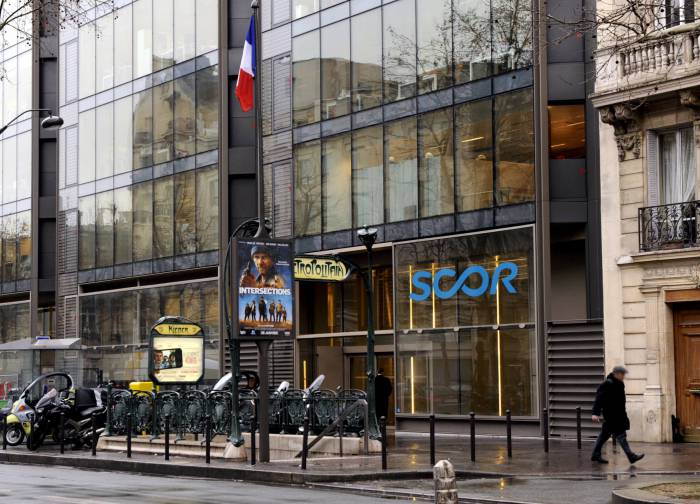In the shoes of a Corporate M&A Analyst
In this article, Raphaël ROERO DE CORTANZE (ESSEC Business School, Master in Management, 2018-2022) shares his experience as a Corporate M&A Intern.
My internship at Scor
In 2020 as an intern, I had the opportunity to join the M&A Team of the French Reinsurer “SCOR” for 6 months.
As this internship allowed me to develop both hard and soft skills as well as helping me devising my future career path, I think it would be interesting to share this experience with you, hoping it could help you or give you some ideas.
SCOR is the world’s fourth-largest reinsurer with 16.4€bn of revenue in 2020. As a reinsurer, SCOR provides insurance companies with a range of solutions and services to control and manage the risks they face through its three divisions: Property & Casualty Reinsurance, Life & Health Reinsurance, and Investment Partners (the institutional investor division of SCOR).
What is a Corporate M&A Analyst?
A Corporate M&A Analyst is a Financial Analyst who works within and for a company, in comparison of a M&A Investment Banking Analyst who works in an Investment Bank or a Boutique.
The Corporate M&A Team is responsible for overseeing and carrying out all the transactions (acquisition, divesture, etc.) of a company. The team is in direct contact with investment banks, which it mandates in the case of an M&A operations. The team is also in direct contact with the Executive Committee and/or the Board of Directors of firms. Corporate M&A Analyst also work with other divisions within the company.
On average, a Corporate M&A Analyst and the rest of the M&A teamwork fewer hours than in an investment bank. Nonetheless, workhours strongly depend on the number of transactions the team makes in a year, and a M&A process can still be very intense and demanding even in a company.
What does a Corporate M&A Analyst do?
The tasks of a Corporate M&A Analyst are usually divided into two parts, the first being M&A-linked tasks and the other linked to the other activities the Corporate M&A team is related. For instance, at SCOR, the M&A team was also responsible for overseeing Corporate Finance at group level. Thus, I also worked on internal projects such as a cross-border restructuring project. In other corporates, M&A teams can be merged with Investor Relations, Strategy or for instance being only responsible for M&A related issues.
M&A tasks consist of:
- Performing financial modelling and valuation: with conventional valuation tools (discounted cash flows, trading comparables and precedent transactions, etc.) and industry-specific tools (dividend discount model, appraisal value – for the Insurance/Reinsurance industry for instance)
- Carrying out competitive and market intelligence of the industry: at SCOR I monitored 20+ competitors and targets, while devising regular updates and case studies on insurance/reinsurance transactions (merger, divesture, IPO, etc.)
- Assisting in the execution on deals: in an acquisition or divesture process, the main task will be to perform valuation from bank documents (Info Memos), data rooms and internal data (in the case of a divesture). Compared to an M&A Analyst in an Investment Bank, a Corporate M&A Analyst also works on and follow the integration challenges raised by an acquisition.
The main tools used by a Corporate M&A Analyst are similar to the ones used by an M&A Analyst in a bank: Excel and Powerpoint of course, but also financial data providers such as Bloomberg, Factset, S&P Global, etc.
How can you become a Corporate M&A Analyst?
The majority of Corporate M&A Analysts and their colleagues usually spend some time in an Investment Bank before joining a Corporate M&A Team. This is why the work habits of a Corporate M&A team are similar to those in a bank: high attention to details, same requirements in terms of mastery of Excel and Powerpoint, high expectations in terms of speed and quality.
Between a job at an investment bank a corporate job, a Corporate M&A position can be a good opportunity to get the best of both worlds: high level of technicity and knowledge of a sector, combined with a more manageable workflow. Furthermore, members of a Corporate M&A team have the opportunity to work on transforming deals for the sake of the company they work for. In comparison, Investment Banking Teams continuously switch from a client to another, from a deal to another, without having the corporate strategy dimension of a Corpor
ate M&A Team.
Key concepts
Trading comparable
A comparable company analysis (CCA) is a process used to evaluate the value of a company using the metrics of other businesses of similar size in the same industry. Comparable company analysis operates under the assumption that similar companies will have similar valuation multiples, such as EV/EBITDA. Analysts compile a list of available statistics for the companies being reviewed and calculate the valuation multiples in order to compare them.
Precedent transaction
The cost of a precedent transaction is used to estimate the value of a company that is being considered. The reasoning is the same as that of a prospective home buyer who checks out recent sales in a neighborhood.
Discounted cash flow
The discounted cash flow (DCF) method is a valuation method used to estimate the value of an investment based on its expected future cash flows. DCF analysis attempts to figure out the value of an investment today, based on projections of how much money it will generate in the future. A DCF valuation of a company gives the Enterprise Value.
Dividend discount model
The dividend discount model (DDM) is a quantitative method used for predicting the price of a company’s stock based on the theory that its present-day price is worth the sum of all of its future dividend payments when discounted back to their present value. A DDM valuation gives the Equity Value (or stock value).
Divesture
A divestiture is the partial or full disposal of a business unit which most commonly results from a management decision.
Property & Casualty insurance
Property and casualty (P&C) insurance provides coverage on assets (e.g., house, car, etc.) and also liability insurance for accidents, injuries, and damage to other people or their belongings.
Life & Health insurance
Life and health (L&H) insurance provides coverage on the risk of life and medical expenses incurred from illness or injuries.
Reinsurer
A reinsurer is a company that provides financial protection to insurance companies (basically an insurer of an insurer). Reinsurers handle risks that are too large for insurance companies to handle on their own and make it possible for insurers to obtain more business than they would otherwise be able to.
Related posts on the SimTrade blog
▶ All posts about Professional experiences
▶ Basma ISSADIK My experience as an M&A Analyst Intern at Oaklins Atlas Capital
▶ Louis DETALLE A quick presentation of the M&A field…
▶ Suyue MA Analysis of synergy-based theories for M&A
Useful resources
Sources: Investopedia, Wikipedia, Corporate Finance Institute, Scor
About the author
Article written in April 2021 by Raphaël ROERO DE CORTANZE (ESSEC Business School, Master in Management, 2018-2022)



1 thought on “In the shoes of a Corporate M&A Analyst”
Comments are closed.